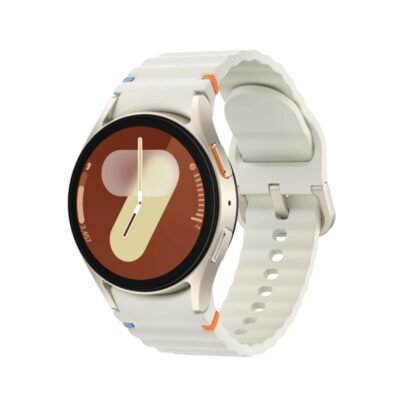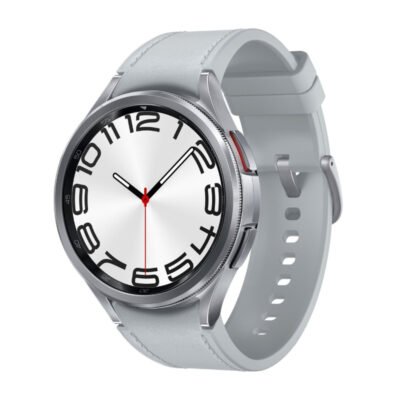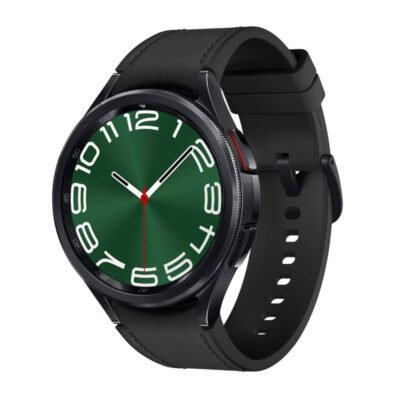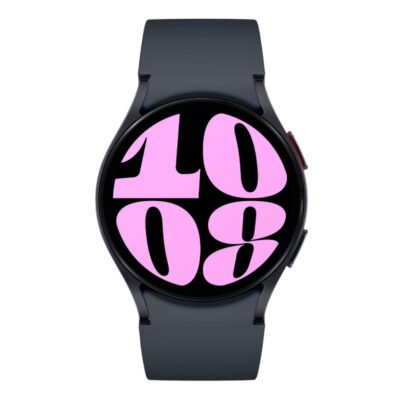Whoop Life 5.0
KSh58,500.00
Whoop Life 5.0 Features and Price in kenya
- Enhanced Healthspan Metric:
WHOOP 5.0 introduces a Healthspan metric, which assesses your biological age compared to your actual age, providing insights into your overall longevity and well-being.
- Improved Sleep Tracking:
The sleep tracking capabilities are enhanced with features like a Sleep Score, a smart alarm, and personalized sleep guidance to help optimize your sleep patterns.
- Hormonal Insights:
WHOOP 5.0 offers advanced tracking for women, providing insights into how menstrual cycles, hormonal fluctuations, and pregnancy impact sleep, strain, recovery, and overall well-being.
- Longer Battery Life:
The device provides an impressive battery life of 14+ days on a single charge, and new charging options include a wireless PowerPack for on-wrist charging.
- ECG Feature:
The Heart Screener with ECG is FDA-cleared, allowing users to take readings from their wrist and share them with healthcare providers, detecting potential issues like atrial fibrillation.
- New Charging Options:
WHOOP 5.0 offers both a basic wired charger and a wireless PowerPack, providing flexibility in how you recharge the device.
The device features enhanced PPG sensors for more accurate heart rate tracking, a more accurate accelerometer for better activity detection, and a smaller, more comfortable design.
- Blood Pressure Insights:
The WHOOP MG (Medical Grade) version, which is a step up from the 5.0, includes daily blood pressure measurements.
- Personalized Insights and Guidance:
Product details
Whoop Life 5.0 Full Specifications and Price in Kenya
The concept of Whoop Life extends beyond a mere fitness application; it embodies a holistic approach to optimizing human performance. Originating from the desire to enhance athletic training and personal wellness, Whoop was established to provide individuals with actionable insights through advanced science and data analytics. The company was founded in 2012 by Will Ahmed, who recognized a gap in personalized health resources that could guide users toward better lifestyle choices and improved physical capabilities.
At its core, Whoop Life hinges on the philosophy that data-driven decisions can significantly elevate one’s performance across various dimensions—physical, mental, and emotional. Unlike traditional fitness trackers that merely monitor physical activity, Whoop’s wearable device captures a multitude of metrics, including heart rate variability, sleep patterns, and overall recovery. This detailed analysis allows users to understand how their bodies respond to different stresses, ultimately empowering them to make informed decisions about their training and recovery. The mission of Whoop is to foster a community centered around personal improvement, where individuals can unlock their full potential through enhanced self-awareness.
As a unique fitness and lifestyle tracking platform, Whoop strives to champion the importance of monitoring recovery as much as training. The app’s user-friendly interface presents real-time data, facilitating a deeper understanding of one’s health. Users engage with their metrics in a way that transforms how they approach their daily routines, introducing a mindset focused on growth and refinement. Through Whoop, individuals are encouraged to embrace a life that prioritizes health and performance, tapping into the potential that lies within.
Understanding the Whoop Strap
The Whoop Strap is a sophisticated fitness tracker designed to provide detailed insights into an individual’s health and performance metrics. Unlike traditional fitness trackers that primarily focus on step counting or heart rate monitoring, the Whoop Strap integrates advanced technology to assess various aspects of physical and mental well-being. Its primary functionalities revolve around monitoring heart rate, sleep quality, recovery levels, and overall strain, which collectively contribute to optimizing an individual’s training and daily activities.
At the core of Whoop’s functionality is its heart rate monitoring system. The strap employs photoplethysmography (PPG) technology, which uses light sensors to measure changes in blood volume. This allows for accurate, real-time heart rate tracking, essential for gauging exertion levels during workouts. Such data can help users understand their cardiovascular health and adapt their training routines accordingly.
Equally important is the sleep tracking feature, which offers insights into sleep cycles, duration, and overall sleep quality. By analyzing these metrics, the Whoop Strap can provide users with personalized recommendations for improving sleep hygiene, which is critical for recovery and performance. The device not only tracks the duration of sleep but also differentiates between deep, light, and REM sleep, giving users a complete picture of their nocturnal habits.
Additionally, the Whoop Strap focuses on recovery metrics, which are pivotal for reducing the risk of injury and enhancing performance. Users receive a recovery score based on their heart rate variability (HRV), resting heart rate, and sleep data, allowing them to make informed decisions regarding their training intensity and overall wellness. Furthermore, the strain tracking feature quantifies the physical exertion experienced during workouts, enabling users to balance workouts and recovery effectively.
In comparison to other fitness trackers, the Whoop Strap’s emphasis on recovery, strain, and sleep quality sets it apart, making it an indispensable tool for serious athletes and fitness enthusiasts aiming to unlock their potential fully.
The Importance of Recovery
In the pursuit of optimal physical performance, recovery is often overlooked, yet it plays a pivotal role in achieving long-term fitness goals. Scientific research has increasingly highlighted the significance of proper recovery, linking it not only to improved athletic performance but also to enhanced overall well-being. Recovery involves various processes, including rest, nutrition, and mental relaxation, each of which contributes to the body’s ability to repair itself and adapt to stresses endured during physical activities.
One of the essential components of modern recovery strategies is the use of advanced technologies, such as the Whoop strap. This device meticulously tracks various metrics related to heart rate variability (HRV), sleep patterns, and strain, subsequently providing users with data-driven insights into their recovery. By measuring the physiological responses to exercise, Whoop can suggest optimal recovery times tailored to individual users, ensuring that athletes can maximize their performance while mitigating the risk of injury.
Research indicates that adequate recovery can lead to significant improvements in muscle strength, endurance, and mental clarity. For instance, sleep is a critical element of recovery, as it enhances the body’s ability to repair tissues and regulate hormonal balance. Insufficient recovery, on the other hand, can lead to chronic fatigue, decreased motivation, and potentially, overtraining syndrome. Thus, understanding the necessity of recovery transforms how we approach fitness routines, encouraging a balanced perspective that integrates periods of rest into our training schedules.
Ultimately, acknowledging the importance of recovery as part of the fitness journey can reshape perceptions within the fitness community. It is essential not only for athletes but for anyone pursuing a healthier lifestyle. Through adopting a mindful recovery protocol, individuals can unlock their true potential and enhance their overall fitness experience.
Tracking Sleep for Optimal Performance
In the pursuit of optimal performance, tracking sleep is a fundamental component that significantly impacts both fitness and overall health. Whoop, a sophisticated health monitoring device, meticulously tracks various aspects of sleep, providing users with invaluable insights into their nightly rest. The device records critical data throughout the sleep cycle, including time spent in different sleep stages: light sleep, deep sleep, and REM sleep. Each stage plays a distinct role in the restorative process of the body and mind, influencing recovery, cognitive function, and physical performance.
The importance of sleep quality versus quantity cannot be overstated. While it may be tempting to focus solely on the number of hours spent asleep, the quality of that sleep is what ultimately determines its efficacy. Whoop allows users to assess not only how long they are sleeping but also how restorative that sleep is. For instance, achieving sufficient deep sleep is crucial for physical recovery, muscle repair, and overall brain health, while REM sleep is essential for emotional regulation and memory consolidation. By understanding these dynamics, users can take proactive steps to enhance their sleep experience.
To leverage the data collected by Whoop for improved sleep quality, users can consider several strategies. Maintaining a consistent sleep schedule can reinforce the body’s natural circadian rhythms. Additionally, creating a sleep-conducive environment—by minimizing noise, controlling light levels, and maintaining a comfortable temperature—can significantly enhance the depth of sleep. Furthermore, limiting screen time before bed and engaging in relaxation techniques can help calm the mind, promoting a more restful night’s sleep. In conclusion, by utilizing Whoop’s sleep tracking capabilities, individuals can unlock their potential, maximizing their performance through improved sleep practices.
Personalized Strain Insights
The Whoop fitness tracker offers a unique feature that allows users to measure and manage their exertion levels through a comprehensive strain tracking system. Strain is quantified based on the heart rate data collected during various activities, providing detailed insights into how physical efforts impact overall recovery and performance. This personalized assessment not only caters to athletes but is also beneficial for those seeking to enhance their daily activity levels.
Each activity, ranging from high-intensity workouts like running or cycling to lower-intensity tasks such as walking or household chores, contributes differently to an individual’s strain score. By understanding the types of activities that elevate their strain, users can make informed decisions about their workout intensity and frequency. For instance, engaging in strenuous exercise may lead to higher strain levels, which could necessitate more recovery time. Conversely, light activities can be used strategically to maintain fitness without overextending one’s capabilities.
The strain tracking feature encourages users to listen to their bodies, promoting a refined approach to training and ensuring that they are not at risk of overtraining. By viewing their daily strain metrics, individuals can assess whether they are maintaining a healthy balance between exercise and recovery. For example, if a workout results in an unusually high strain score, users may choose to adjust their subsequent activities to incorporate more restorative practices such as yoga or light stretching. This adaptability is crucial for fostering long-term fitness and well-being.
Ultimately, the personalized strain insights provided by the Whoop tracker empower users to enhance their performance sustainably, avoiding the pitfalls of overexertion. By regularly monitoring exertion levels, they can tailor their training regimens to better support both physical growth and recovery needs, aligning their efforts with their personal fitness goals.
Customizable Goals and Community Support
The Whoop Life experience is designed with a strong emphasis on personalization, allowing individuals to set and pursue their unique fitness goals. Users can customize their objectives based on various parameters, which include personal fitness level, lifestyle preferences, and overall health aspirations. This flexibility ensures that users remain engaged and motivated, as they can define their own pathways towards self-improvement. Whether the aim is to enhance athletic performance, improve recovery times, or dedicate time to mental health, Whoop supports a range of ambitions tailored to each individual.
Moreover, the community aspect of Whoop enhances the motivation factor significantly. By connecting with like-minded individuals, users acquire a source of encouragement and accountability. Features such as team challenges are instrumental in fostering camaraderie, as they invite participants to engage in friendly competition, track progress in real-time, and celebrate collective achievements. This social integration not only boosts the spirit of competition but also nurtures substantial relationships among users, transforming the fitness journey into a shared experience.
The Whoop platform also allows users to share their insights, experiences, and progress within their social circles, thus amplifying community support. This element reduces the feelings of isolation often associated with personal fitness journeys, paving the way for collaborative growth. It cultivates an environment where users feel empowered to strive for their best self, buoyed by the encouragement from their peers. Such a network provides a comprehensive support system that is vital for maintaining motivation over the long haul.
In essence, by combining customizable goals with robust community support, Whoop not only caters to individual fitness needs but also builds lasting connections among its users, promoting a holistic approach to well-being and achievement.
Testimonials: Real-Life Whoop Experiences
The Whoop Life experience has proven transformative for many individuals, significantly enhancing their fitness and overall health. A selection of testimonials illustrates how integrating Whoop into daily routines has positively impacted users’ lives, encouraging others to explore its potential benefits.
One user, Rachel, a fitness enthusiast and marathon runner, shared her experience of utilizing Whoop’s insights to fine-tune her training regimen. After consistently tracking her recovery metrics, she discovered that adjusting her rest days significantly improved her performance. “The data I receive from Whoop allows me to listen to my body in a way I never could before. It helped me achieve a personal best in my marathon time,” Rachel explains. Her story highlights the practical application of Whoop technology in optimizing endurance training.
Similarly, John, a busy corporate executive, noticed substantial improvements in both his physical health and stress management after adopting Whoop. “With my hectic schedule, I often overlooked my health. Whoop reminded me to focus on sleep and recovery, which not only boosted my energy levels but also my mental clarity at work,” he recalls. John’s narrative emphasizes that the Whoop Life experience transcends just physical fitness, affecting overall well-being and productivity.
Another notable testimonial comes from Lisa, a new mother who found her stride post-pregnancy by leveraging Whoop’s tailored recovery insights. “The postnatal period was overwhelming, but Whoop helped me prioritize self-care. The insights into my sleep allowed me to carve out moments for recovery, positively impacting my mood and energy as a parent,” she illustrates. Lisa’s experience demonstrates how Whoop supports health journeys during significant life transitions.
These personal experiences are just a glimpse into how the Whoop Life experience is empowering users to take charge of their fitness and health. The combination of real-time data and actionable insights prompts users to make informed choices that lead to lasting change.
Potential Drawbacks and Limitations
While the Whoop device offers numerous benefits for tracking health and optimizing performance, it is essential to consider its potential drawbacks and limitations. One significant concern is the dependency on the device itself. Relying heavily on metrics provided by Whoop may lead individuals to prioritize data over their intrinsic understanding of their well-being. This dependency could result in an overemphasis on quantitative measures, which may not always accurately reflect one’s personal health outcomes or emotional states.
Another noteworthy limitation pertains to the subscription model associated with Whoop. Unlike many fitness trackers, Whoop requires users to pay a monthly subscription fee to access its features and analytics. This ongoing cost can accumulate significantly over time, leading potential users to weigh the financial implications against their commitment to improving their fitness and health. For individuals on a budget, the combination of the initial device cost and continuous subscription fees may render this option less accessible, thereby acting as a barrier to participation.
Moreover, while Whoop strives for accuracy, there are instances where the device may not provide the most precise data. Factors such as skin temperature variances, heart rate sensor quality, and environmental conditions can occasionally lead to discrepancies in metrics. In some cases, users have reported inconsistent readings, emphasizing the importance of approaching data interpretation with caution. It is crucial for users to remain aware that while Whoop can provide valuable insights, it should not serve as the sole determinant of health, performance, or recovery.
This balanced outlook on potential limitations associated with Whoop can provide a more comprehensive understanding for those considering this device, helping them to make informed decisions regarding their fitness and health journeys.
Conclusion: Is Whoop Life Right for You?
In evaluating the potential of the Whoop life experience, it is crucial to consider various aspects that influence its suitability for individual fitness journeys. The Whoop strap, designed to monitor physiological metrics such as heart rate variability, sleep quality, and strain, provides valuable insights that can benefit many people seeking to enhance their health and performance. This wearable technology stands out for its focus on recovery, emphasizing that strain should be balanced with appropriate rest for optimal physical results.
For individuals whose fitness goals prioritize data-driven decision-making and personalized strategies, the Whoop life presents a compelling option. Users can track their progress closely, optimizing workout routines based on real-time feedback. This can support a tailored approach to reaching personal objectives, whether that means building endurance, increasing strength, or improving overall well-being. Additionally, the emphasis on community engagement may resonate with those who enjoy sharing their fitness journeys with like-minded individuals.
However, it is essential to acknowledge that adopting the Whoop life may not align with everyone’s preferences. For individuals who prefer a more traditional approach to fitness without digital tracking, or who may find constant monitoring overwhelming, alternative methods may be more suitable. Furthermore, the subscription fee associated with Whoop can be a consideration, prompting potential users to assess their budget and commitment to utilizing the platform fully.
Ultimately, whether the Whoop life is the right choice for you hinges on your personal fitness philosophy, lifestyle, and willingness to engage with technology. By carefully weighing the benefits and challenges highlighted throughout this discussion, individuals can make an informed decision on whether to incorporate the Whoop experience into their fitness journey, aligning it with their aspirations for health and performance.

















There are no reviews yet.